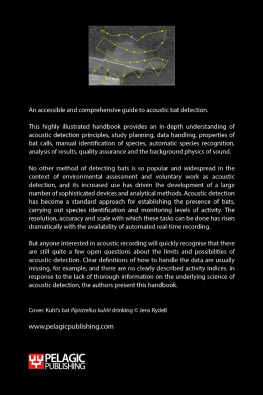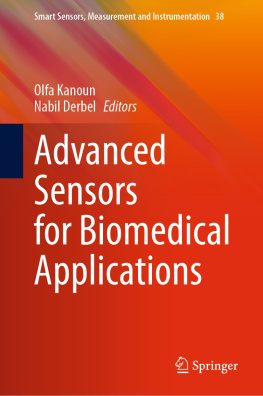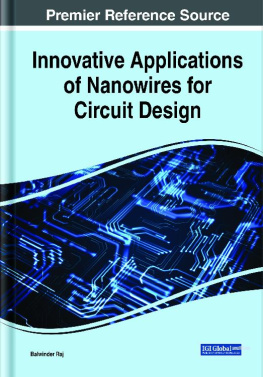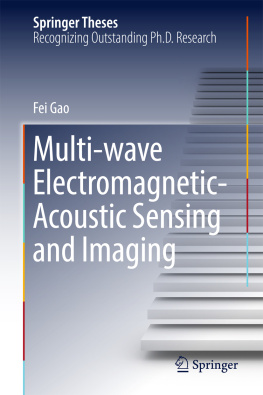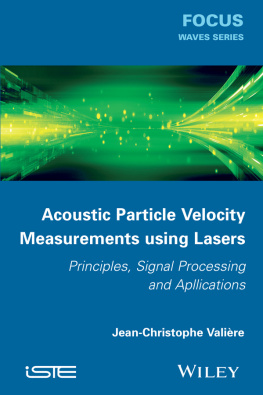.
Copyright
This book is printed on acid free paper. 
Copyright 1997 by Academic Press
All rights reserved.
No part of this publication may be reproduced or transmitted in any form or by any means, electronic or mechanical, including photocopying, recording, or any information storage and retrieval system, without permission in writing from the publisher.
ACADEMIC PRESS, INC.
525 B Street, Suite 1900, San Diego, CA 92101-4495, USA
1300 Boylston Street, Chestnut Hill, MA 02167, USA
http://www.apnet.com
ACADEMIC PRESS LIMITED
2428 Oval Road, London NW1 7DX, UK
http://www.hbuk.co.uk/ap/
Library of Congress Cataloging-in-Publication Data
Acoustic wave sensors : theory, design, and physico-chemical applications / D.S. Ballantine, Jr. [et al.].
p. cm.(Applications of modern acoustics)
Includes bibliographical references and index.
ISBN 0-12-077460-7 (alk. paper)
1. Acoustic surface wave devices. 2. Detectors. 3. Chemical detectors. 4. Biosensors. I. Ballantine, David Stephen. II. Series.
TK5984.A38 199696-21931
681.2dc20CIP
Printed in the United States of America
9697989900MV987654321
Series Preface
Modern Applications of Acoustics is a series, that will, in the hopes of the editors, present the most exciting developments in the applications of acoustics that have emerged in the past few decades. This first seven-author volume, which was already nearing publication when the series was conceived, is an auspicious beginning. It can be argued that all living entities have their own built-in biological acoustic sensors, be they aural or tactile, whose sensitivity, in some instances, is at the optimum signal-to-noise level. For instance, it is known that if the human ear were any more sensitive, Brownian noise would mask the intelligibility of perceived sound. It is possible that the sound emitted by crackling dry leaves and twigs may be the first artificial sensors devised by humans for detecting game or intruders. The sensors described in this volume avail themselves of the most modern microphotolithographic techniques, and use sophisticated signal processing techniques that could not be achieved without the use of the formidable power of modern computers. But, the germinal ideas are the product of human ingenuity.
The editors envision that future volumes will be authored by scientists and engineers who are internationally recognized in their fields as experts and who have made major contributions to the advancement of their areas. The series will include volumes that may be prepared by a single author, a few co-authors, or in the instance of emerging fields, the required expertise may best be harnessed by a guest editor who then will solicit contributions from many experts in narrower subfields.
At present the editors are actively pursuing the publication of volumes in thermoacoustic engines, resonant ultrasonic spectroscopy, modern architectural design, active noise suppression, biological and industrial flow detection, nondestructive evaluation, underwater detection, acoustic tissue characterization, sonoluminescense, and more.
The editors dedicate this series to their thesis advisor and mentor, Professor Isadore Rudnick.
Richard Stern and Moises Levy
Chapter 1
Why Acoustic Sensors?
Precise measurement tools are necessary parts of most successful scientific and engineering enterprises. The sensing devices that we consider in this volume are such tools, capable of measuring physical, chemical, and biological quantities. What they have in common is that they all employ acoustic waves in their operation. The purpose of this introductory chapter is to provide an overview of these devices, and to answer the question: why use acoustic sensors?
1.1 What Is a Sensor?
(top). The output signal is usually electrical an analog voltage or current, a stream of digital voltage pulses, or possibly an oscillatory voltage whose frequency represents the value of the input quantity. The range of input quantities covered in this book is large, including physical quantities such as the mechanical properties of thin films, and chemical and biological quantities such as the concentrations and identities of unknown species in air or liquid media.

Figure 1.1 Sensor principles. (Top) Schematic diagram of a sensor that produces an electrical output in response to the presence of an input quantity. (Bottom) Biosensor comprising the generic device shown at top with a molecular recognition layer that has a highly selective response.
presence of a toxic vapor, or combining with other signals to provide a physician with information on which to base a medical decision.
Sensors are characterized in many different ways. Their sensitivity is a measure of the magnitude of the output signal produced in response to an input quantity of given magnitude; their resolution is a measure of the minimum change of input quantity to which they can respond; and their selectivity characterizes the degree to which they can distinguish one input quantity from another. However, with chemical sensors for vapors or gases, high selectivity is usually desired but often hard to achieve. A telling example is the commercial Taguchi gas sensor for natural gas or propane, which employs a fairly nonselective solid-state process that takes place at the surface of its heated sensing resistor. When a gas molecule reaches the sensor surface, it can strongly affect the electrical resistance of the element and thus trigger an alarm circuit. According to the manufacturers instructions, however, the user achieves selectivity by mounting the device high on the wall if natural gas is to be detected, or near the floor if propane sensing is desired propane being more dense than natural gas!
(bottom), the molecular recognition element may contain particular molecules that react with only one other type of molecule. The example in the figure suggests using particular antibodies (the dark cloven objects) that bind to only one type of antigen (the triangularly shaped one). Exploiting this bioselectivity can permit detection of very low concentrations of substances in a very dense background of other molecules.






